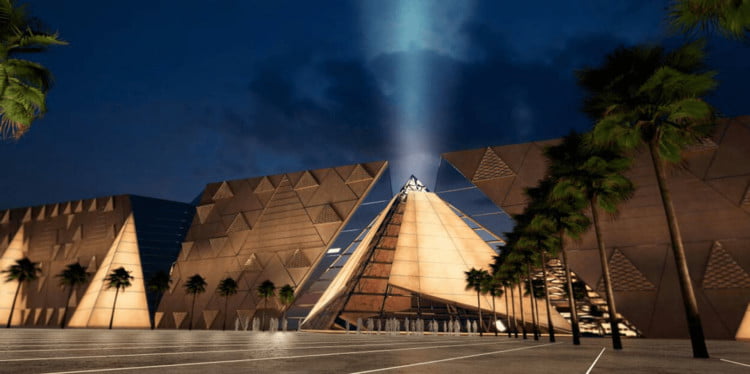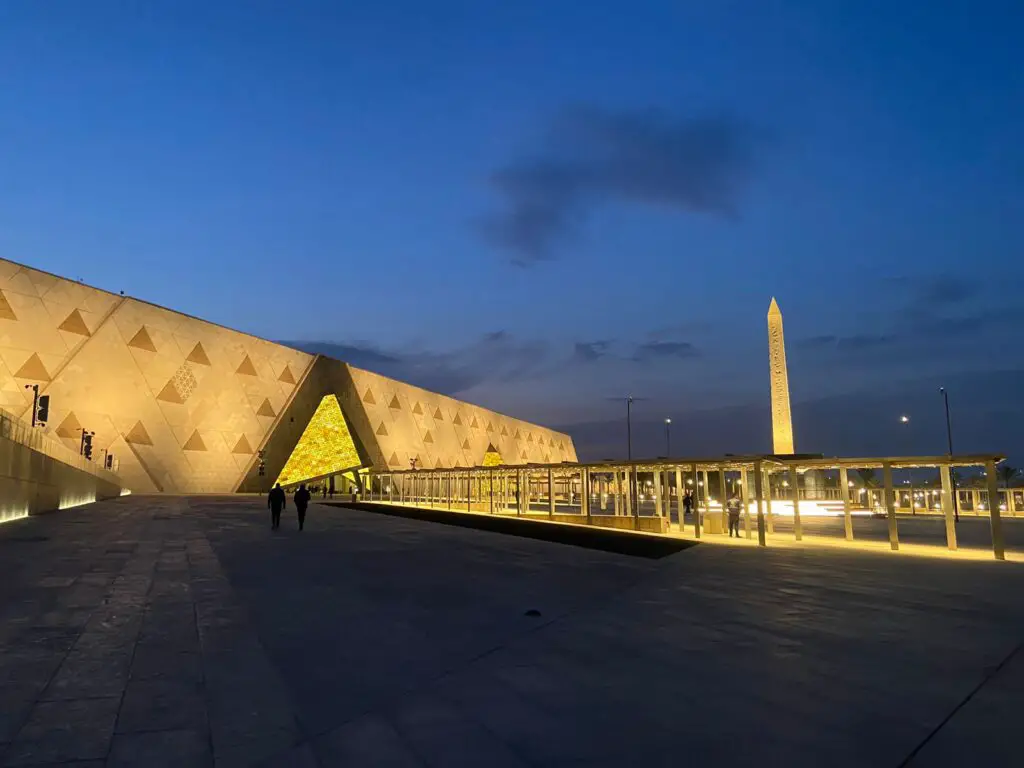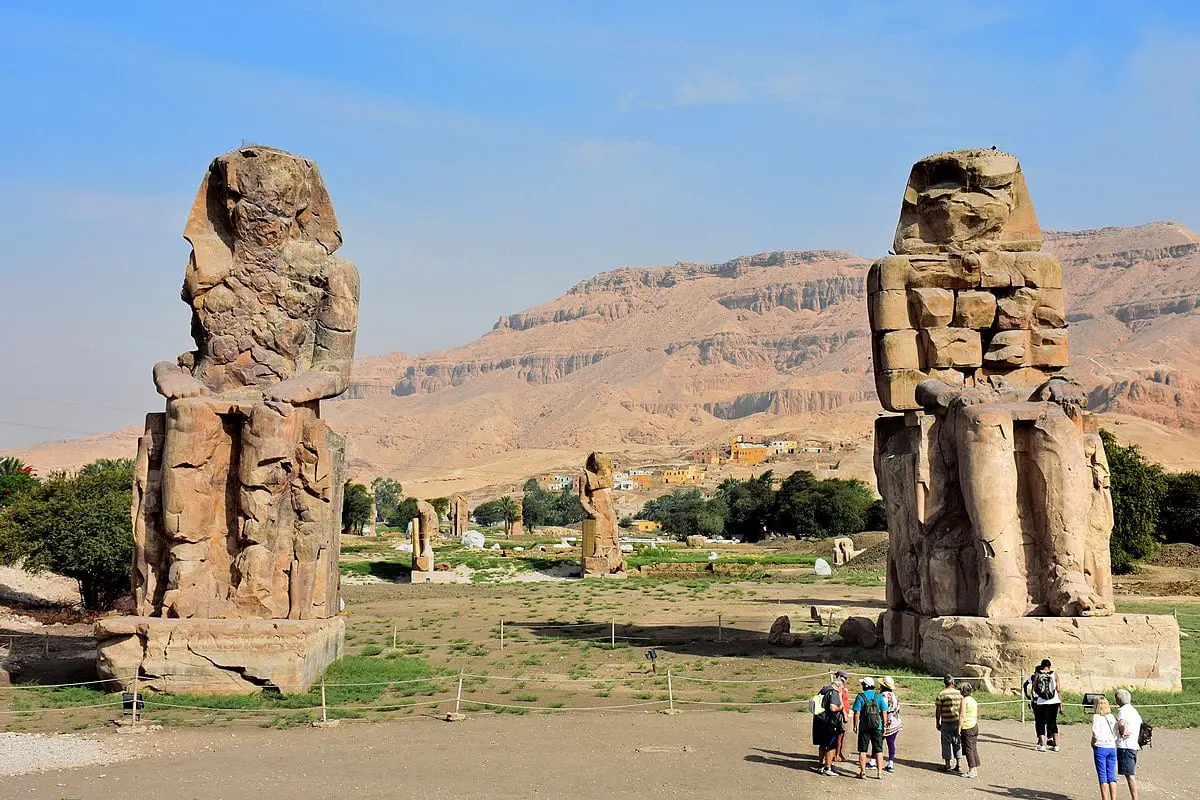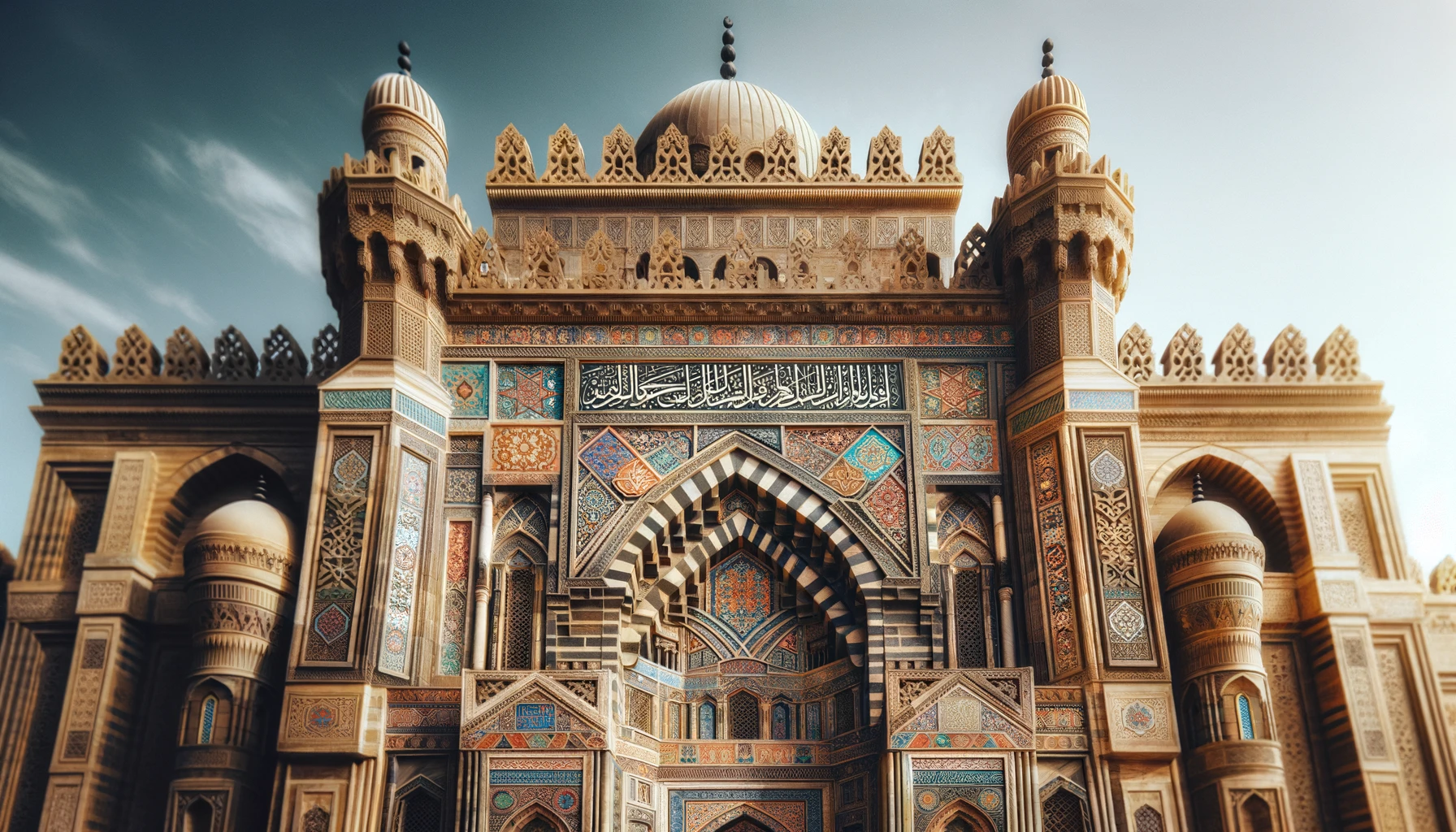The Grand Egyptian Museum

The Grand Egyptian Museum, also known as GEM, is an ambitious cultural endeavor designed to exhibit the richness and splendor of ancient Egypt in an unprecedented manner. Situated near the iconic Giza pyramids, the museum is scheduled to open its doors to the public in 2024, following several postponements.
The concept of the Grand Egyptian Museum first emerged in the early 1990s, but construction didn’t commence until 2002. This colossal project has involved the collaboration of hundreds of workers, archaeologists, and curators from across the globe.
Incorporating cutting-edge technology, the museum is poised to become one of the most sophisticated cultural institutions in the world.


Museum contents:
Spanning an area of 480,000 square meters, the museum is set to be the largest archaeological museum worldwide. It will display over 100,000 artifacts, including some of ancient Egypt’s most renowned and invaluable treasures, such as those from the tomb of Tutankhamun.
A key feature of the museum is the GEM Conservation Center, a facility at the forefront of artifact restoration and preservation. The center will play a crucial role in maintaining thousands of artifacts, many of which have been in storage for years.
The museum’s layout includes several galleries, each dedicated to different facets of ancient Egyptian history. These include the Grand Entrance Hall, the Tutankhamun Galleries, the Royal Mummies Hall, and the Ancient Egyptian History Galleries.
The Grand Entrance Hall, covering over 7,000 square meters, greets visitors with an array of magnificent sculptures and artifacts. Dominating this space is an imposing 11-meter-tall, 90-ton statue of King Ramesses II.
The Tutankhamun Galleries focus on the Boy King’s treasures, unearthed in the Valley of the Kings by British archaeologist Howard Carter in 1922. These galleries will feature over 5,000 artifacts, including Tutankhamun’s famed golden mask and throne.
The Royal Mummies Hall is another museum highlight, displaying the mummies of renowned pharaohs like Ramses II, Seti I, and Hatshepsut. This exhibit respectfully portrays their cultural heritage, offering insights into the lives and traditions of ancient Egypt.


Egyptian history exhibitions:
The Ancient Egyptian History Galleries encompass a broad spectrum of topics, including religion, art, and daily life. Featuring thousands of artifacts, such as statues, pottery, and jewelry, these galleries provide a comprehensive view of one of the world’s oldest and most intriguing civilizations.
Leveraging advanced technology, the museum offers an immersive experience of ancient Egypt. For instance, its 3D cinema will take visitors on a historical journey, while interactive displays provide an engaging exploration of ancient Egyptian art and architecture.
Beyond the exhibition space, the museum boasts amenities like restaurants, cafes, and shops, ensuring a comfortable and enjoyable visit. Its proximity to the Giza pyramids also allows visitors to conveniently combine a museum tour with a visit to one of the world’s most famous archaeological sites.
In summary, the Grand Egyptian Museum is a monumental cultural project that aims to showcase the wealth and grandeur of ancient Egypt in a novel and spectacular way, harnessing state-of-the-art technology and global expertise.




